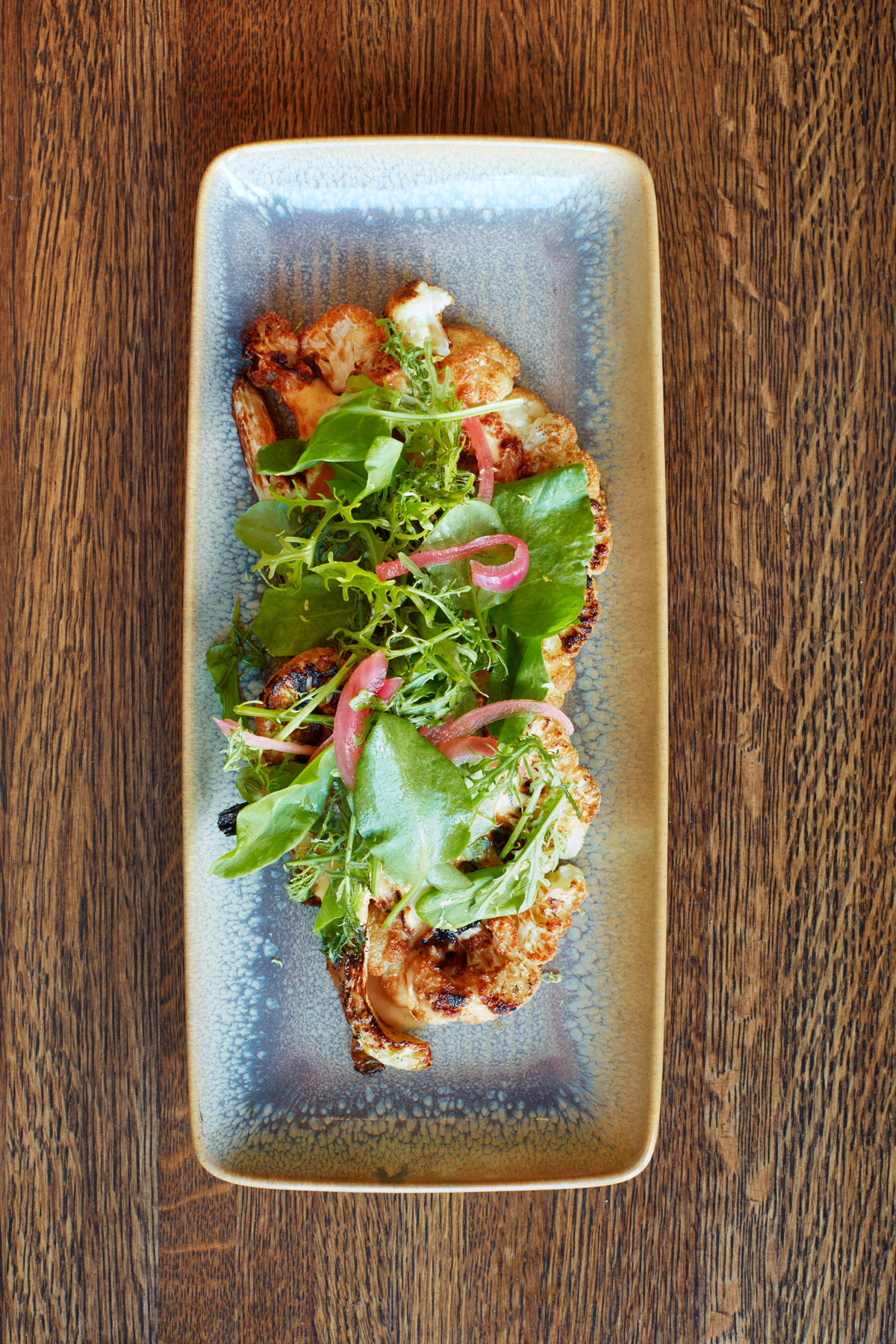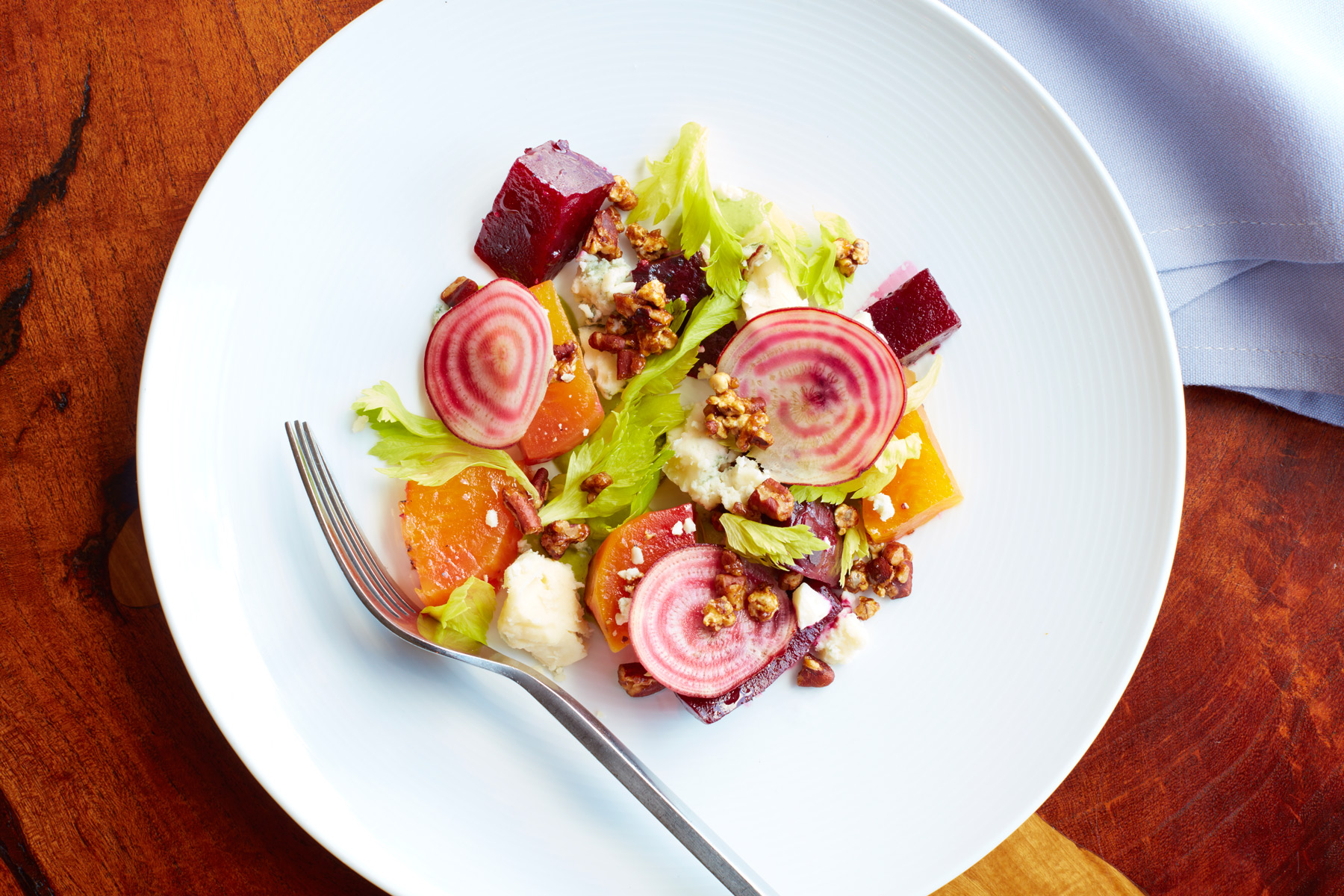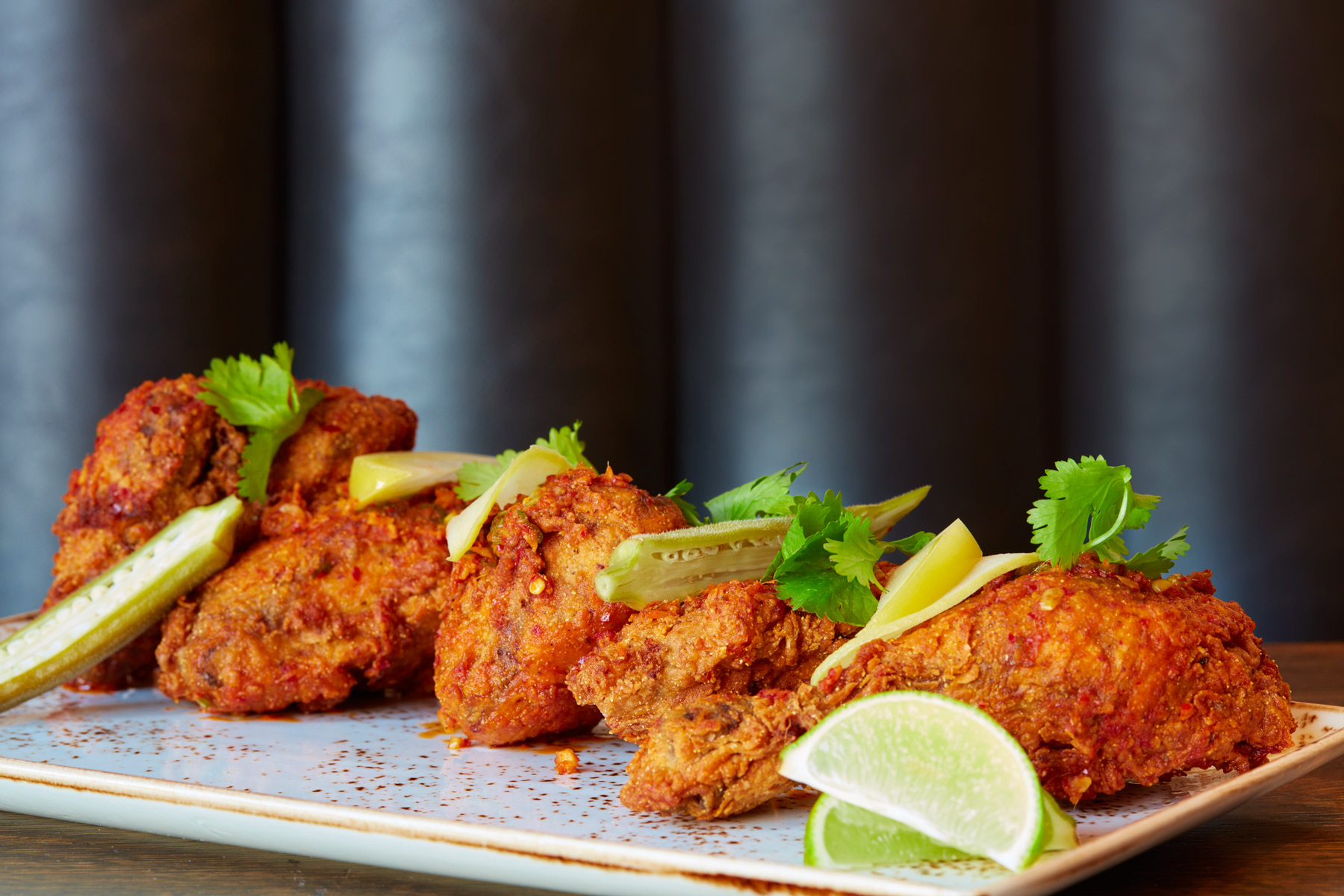Curry was not the aroma I was expecting when I entered Rapscallion, the much-anticipated Southern restaurant from the team behind Boulevardier. I queried our waitress. That was the pork cracklins, she said, with a vadouvan dusting. I should have expected Indian spice blends.
The South has been having its resurgence. Chefs like Charleston’s Sean Brock—whose cookbook, Heritage, won the latest James Beard Award for American cooking and whose restaurant, Husk, was hailed as a game changer—have thrust onto the national stage a new Southern cuisine that acknowledges the South as the melting pot that it is, full of tributaries that have formed tradition. What they’re championing isn’t Southern cooking the way we may think we know it. It’s a more foodways-researched South, a historically informed South, that honors a confluence of influences—African, Caribbean, Native American, Creole.

This is how to understand Rapscallion as Southern. You’ll find gulf oysters, crawfish hushpuppies, and fried chicken, but is that an Aleppo-pepper-spiced goat kebab? Yes. They’re doing a South as stitched and textured as the panels of felt, mirror glass, and horseshoes that hang on one white-painted brick wall. Many of the farm implements and branding irons came from the Rockwall County family farm where head chef Nathan Tate was born and worked baling hay, fixing fences, and herding cattle all through high school. It’s not surprising that the South as modern smithy, a cuisine forged in sparks, is what drew the crew that opened Boulevardier, with its globally tinged French fare.
The result at Rapscallion is sometimes phenomenal, sometimes disorienting.
For first impressions, the best is not the pickled shrimp, a dish like an inside-out pickle jar. I crunched on mounds of pickled onion and coriander seeds, while the shrimp tasted of little at all. Watermelon, fresh mint leaves, and rings of chile brought surprisingly little to the party.
Try instead a coal-roasted beet salad with creamy, garlicky green goddess dressing, toasted pecans, popped-sorghum granola (sweet, crunchy, Cracker Jack-like fun), and Rogue Creamery blue cheese, which echoed the slight smoke of the beets. Smoky, crunchy, nutty, sweet—it combined elements of the South in the most wonderful way.
In some of the best starters, Asian ingredients signaled slight but specific variations. Slices of raw yellowtail were presented like sashimi, but with a dill-forward chow chow and cornbread croutons that playfully crunched. A house dry-aged beef carpaccio’s soft, pliant folds were daubed in vibrant chile sauce and flanked with candied peanuts and the soft gills of pickled oyster mushrooms. The play of textures was marvelous. Perhaps best of all was grilled cauliflower, brightened with pickled onion and parsley, which wore a mantle of lemony, Alabama-style white barbecue sauce infused with miso and tamari, a creamy umami unction.

I savored the dashi broth, whose lovely, light seaweed flavor brought a wholly new identity to black-eyed peas, collard greens, and littleneck clams. But catfish, the ostensible centerpiece in its fine, crunchy dusting of cornmeal, was too salty to enjoy. The same fate befell a playing-card-size morsel of redfish, which, with chayote-red cabbage slaw, three hushpuppies, and a slick of bright, sweet Peppadew pepper sauce, also seemed cavalier in its pricing ($29).
Meats, which far outshone fish, showed true Southern reverence for heifer and hog. “I’ve always loved open flame,” Tate says. “So it’s always been a theme in my cooking.” In college, he bought his fraternity a smoker/grill in lieu of dues, the steaks and ribs he grilled there his first forays into crowd-scale cooking. Rapscallion’s open-fire rotisserie was a new chance to experiment, one he relishes.
The robust, beefy flavor of richly marbled short ribs, served with hominy, cucumbers, and cherry tomatoes, was intensified by three-day sous-vide marination, a toss over fire, and a savory barbecue glaze for a cumulative punchy, deep flavor that resembled dry aging.
Achiote-rubbed heritage Berkshire pork collar was as tender and sweet as milk-fed pork or suckling pig. It may be your new favorite cut. “I think I went through the whole pig, putting it on the rotisserie,” Tate says. “I threw pork shoulder on there, bone-in pork loin, hams. At one point, I think I threw on some jowls.” Pork collar was his epiphany. Ultimately, the dish’s other elements didn’t fully cohere, their Yucatan profile making more sense in theory than in practice. The caramelized plantains my friend so eagerly awaited were essentialized to a mere yellow smear. Escabeche vegetables muscled in with their acid, salsa verde joined the tussle, and I could almost hear the sweet little pork clicking its heels, saying, “There’s no place like home,” while my palate was left wondering where true north was.
The team at Rapscallion is ambitious and innovative. As a result, meals were either exhilarating or dragged down. Not by heaviness, which one might expect from Southern cuisine, but by salt or a maelstrom of flavors, the negative vision of fusion as a slew of borrowings that lack internal coherence. Such was the case in the boozy Fernando float with horchata ice cream, rum, ginger beer, cajeta, and sweet sesame wafer, like Jamaica and Mexico holding an ill-advised summit in low-country South Carolina. I gave up on making sense of it and dove for the benne brittle that had sunk, like a prize, to the bottom.
Not everyone will, but I loved the bold, raw astringency of the sweet-tea ice cream that turns the John Daly float a shade like Mississippi mud; loved, too, those fabulous candied mint leaves on top. And a peach crisp whose crumble, textured with almond slivers and oats, married peach, almond, and ginger and yielded to the gentle advances of house-made vanilla ice cream. Here were desserts that telegraphed direct, honest flavors.
Ultimately, I declare the fried chicken the true Rapscallion child: roguish, cheeky, and totally wonderful. Tate plays fast and loose with Nashville-style hot fried chicken. He fries up the tea-brined rotisserie bird and tops it triumphantly with a Szechuan-style vinaigrette, layered with spices and fresh aromatics, inspired by a visit to Houston’s Chinatown restaurant Mala. The meat is juicy; the vinaigrette’s acidity cuts through the crispy, shaggy, wonderful slough of crust. We have a thing or two to learn from this fried chicken, with its perfect balance of sweet, sour, salty, spicy, and pungent. To me, it represents Rapscallion at its best—reason enough to add them to the pantheon of the new South.







